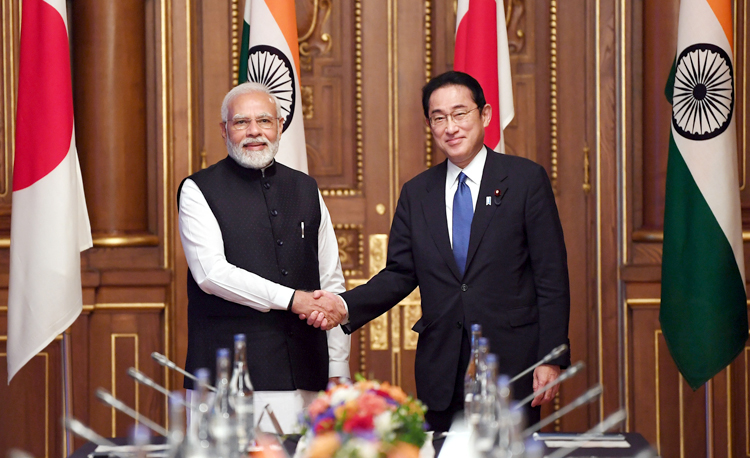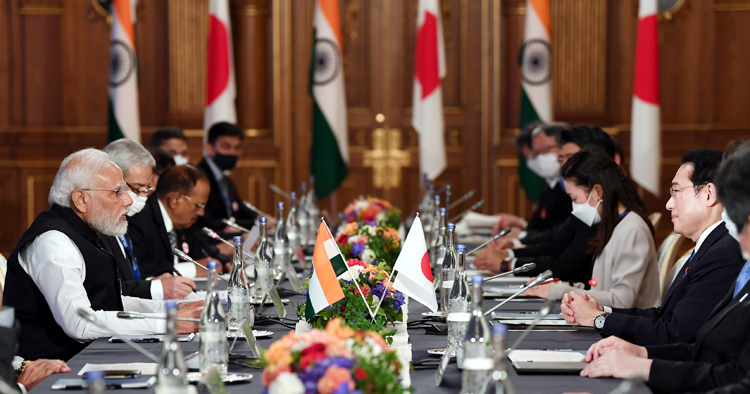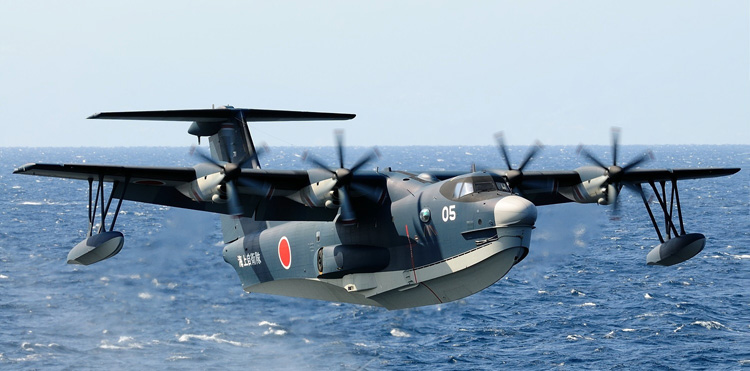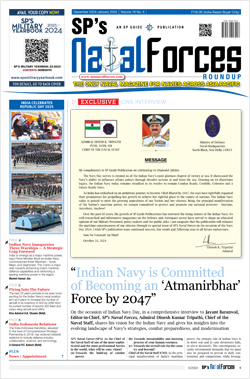INDIAN ARMED FORCES CHIEFS ON OUR RELENTLESS AND FOCUSED PUBLISHING EFFORTS

The insightful articles, inspiring narrations and analytical perspectives presented by the Editorial Team, establish an alluring connect with the reader. My compliments and best wishes to SP Guide Publications.

"Over the past 60 years, the growth of SP Guide Publications has mirrored the rising stature of Indian Navy. Its well-researched and informative magazines on Defence and Aerospace sector have served to shape an educated opinion of our military personnel, policy makers and the public alike. I wish SP's Publication team continued success, fair winds and following seas in all future endeavour!"

Since, its inception in 1964, SP Guide Publications has consistently demonstrated commitment to high-quality journalism in the aerospace and defence sectors, earning a well-deserved reputation as Asia's largest media house in this domain. I wish SP Guide Publications continued success in its pursuit of excellence.
- MoD initiates comprehensive review of Defence Acquisition Procedure 2020, pushes for defence reforms
- G7: The Swansong
- Kalinga Connect: South Asia to Polynesia
- Advanced MRSAM for India for a greater firepower
- Must Credit DRDO for Operation Sindoor, now what is next for defence R&D?
- Operation Sindoor | Day 2 DGMOs Briefing
- Operation Sindoor: Resolute yet Restrained
India-Japan Defence Collaboration
Indo-Japanese defence relations have witnessed an upsurge in recent years which includes joint bi-lateral and multi-lateral exercises. The next 2+2 Indo-Japanese Foreign and Defence Ministerial Meeting is to be held in Japan at the earliest.
 |
The Author is Former Director General of Information Systems and A Special Forces Veteran, Indian Army |

Prime Minister Narendra Modi’s recent bilateral meeting with Japanese Prime Minister Fumio Kishida on the sidelines of the QUAD Leaders Summit in Tokyo has given a boost to the Indo-Japanese Special Strategic and Global Partnership. Both leaders exchanged views on enhancing bilateral relations and discussed regional and global issues, highlights of which are as under:
- Enhance bilateral security and defence cooperation, including in the area of defence manufacturing.
- Jointly work towards Yen 5 trillion public and private investments and financing from Japan to India over the next five years.
- Greater collaboration between private sectors of both nations for developing next generation communication technologies and in critical and emerging technologies like 5G, beyond 5G and semiconductors; cooperation in the area of Clean Energy including green hydrogen;
- Boost people-to-people linkages including scaling up the Special Skilled Workers program, quarantine free entry into Japan for Indians carrying vaccination certificates and prioritising development of India’s North East region under the India-Japan Act East Forum.
- Convergence of approaches to the Indo-Pacific and reaffirmed commitment towards a free, open and inclusive Indo-Pacific region.
Japanese economy has been dented by the Covid-19 pandemic and the adverse fallouts of the Ukraine conflict.In mid-April, Bank of Japan announced that the domestic corporate goods price index had reached its highest point since 1982, with the central bank attributing the 9.5 percent year-on-year increase to surging prices for crude oil and grain triggered by the nascent recovery from the Coronavirus pandemic. That increase was exacerbated by the Ukraine conflict and the sudden sharp fall in the value of the Yen serving to lift the price of imports.Boosting of economic relations between India and Japan will be good for both nations.
Boosting of economic relations and collaboration in defence manufacturing between India and Japan will be good for both nations
India and Japan have exchanged notes on the 3rd tranche loan for the Mumbai-Ahmedabad High Speed Rail (MAHSR) project. The next 2+2 Indo-Japanese Foreign and Defence Ministerial Meeting is to be held in Japan at the earliest.
In a major policy shift, Japan announced plans on May 27, 2022, to allow the exports of lethal military equipment, including missiles and jets, to India and 11 other countries. Japan will reportedly ease regulation by March 2023 to allow defence exports to India. According to a report by Nikkei, the Japanese government also aims to “enhance deterrence against China by cooperating with countries that have signed individual security agreements with Tokyo; these countries include Vietnam, Thailand, Indonesia, Malaysia, the Philippines, the US, Britain, Germany, France and Italy.

The Acquisition and Cross-Servicing Agreement (ACSA) between Japan’s Self-Defense Forces and India’s military was signed in September 2020; a reciprocal provision of supplies and services between their defence forces in order to drive closer military cooperation and contribute to security in the Indo-Pacific. The discussion over possible import and joint production in India of the Japanese ShinMaywa US-2 amphibious aircraft was ongoing for past several years but somehow fizzled out. Significantly in late 1990’s, Japan had offered placement of its amphibious aircraft (s) free of cost in Andaman and Nicobar Group of islands for joint operations by India and Japan against sea piracy but there was no response by India.
China’s illegal and outlandish territorial claims and aggressive military posture across the Indo-Pacific region has accelerated defence cooperation between India and Japan because of shared security concerns
According to the 2014 principle, defence exports to countries that don’t jointly develop arms with Japan are limited to equipment for rescue, transport, warning, surveillance, and minesweeping missions. The new rules on defence exports will be part of the Japan government’s policy on economic and fiscal management and reform, to be finalised in June. The principle for defence exports will eventually be revised, lifting the ban on export of lethal weapons, after Japan’s National Security Strategy is framed by the end of this year.

China’s illegal and outlandish territorial claims and aggressive military postureacross the Indo-Pacific region has naturally accelerated the defence cooperation between India and Japan because of shared security concerns. There is speculation about Southeast Asian nations like the Philippines, Malaysia, Indonesia, Thailand, and Vietnam receiving Japanese defence exports, plus others like India, Italy, Germany, France, Britain and the US.
Japan intends to collaborate with the US and the UK to build new fighter jets and medium-range anti-aircraft missiles and is already engaged with the UK on multiple projects associated with the next-generation fighter aircraft for Japan. Japan has already exported bulletproof jackets and helmets to Ukraine and is ready to export such equipment to countries that don’t even have any security arrangement with Japan.
In a major policy shift, Japan announced plans to allow the exports of lethal military equipment, including missiles and jets, to India and 11 other countries. Japan will reportedly ease regulation by March 2023 to allow defence exports to India.
Japan’s defence exports have been severely restricted because of the US-Japan Treaty of Mutual Cooperation and Security signed in 1960. However, now the US has realised that taking on China individually is not going to be easy, given the rise and aggressive posture of China, accelerating naval capabilities vis-à-vis the US navy and Chinese advances in space, hypersonic, and Assassins Mace weaponry.

Indo-Japanese defence relations have witnessed an upsurge in recent years which includes joint exercises. Joint bi-lateral and multi-lateral naval exercises have been a regular feature. The joint army exercise ‘Dharma Guardian’ is an annual feature since 2016. Exercise Dharma Guardian 2022 was conducted from February 27 to March 10 at Belgaum, Karnataka. The first joint air exercise ‘Shinyu Maitri-1’, focusing on joint mobility, humanitarian assistance and disaster relief (HADR) operations, was held in Uttar Pradesh during December 3-7, 2018.
Indo-Japanese collaboration in defence manufacturing will be good for both countries. It will give a fillip to the Japanese economy and give a boost to ‘Atmanirbhar Bharat’ in defence; joint ventures with Japan’s potent defence industry, including in the fields of semiconductors and communications.





